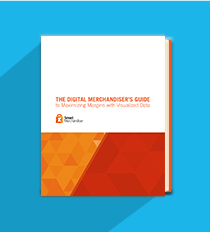
Attribute management is one of the most time-intensive tasks that digital merchandisers are charged with. However, the chore of adding new merchandise to your shop quickly, and being able to swap out colors and sizes as needed with an easy-to-use attribute management system.
Here are five ways that an attribute management system, like the one built right into Smart Merchandiser, can help you grow your online inventory in a snap.
1. See Your Products, Not a Spreadsheet
It’s no fun spending hours staring off into the middle distance while editing vast, unbroken spreadsheets of product attribute data. This is why top merchandisers are looking to visual solutions to enhance their Websphere tools. With an attribute management system in place, everything is organized in an intuitive, easy-to-operate system that shows you the products you’re assigning attributes to and which attributes you’re assigning so you’re able to see the forest and not just the trees.
2. Get Out of The Maze
Wading through a maze of menus is not a productive use of your time when managing attributes for your storefront. However, there are one-click solutions available that allow you to view all your choices as an organized list, sorted by categories you define. This improved management workflow makes it so that once all your clicks are in, you’re ready to stop spending time lost in the backend and start selling. If something changes, just select a different box and all the connected information will automatically be updated.
3. Missing Attributes
When you’re charged with tagging all of the products in your catalog with all of the appropriate attributes it can become overwhelming. It’s easy to miss items, or mis-mark attributes in the rush to get through the catalog.
With Smart Merchandiser’s attribute management system you can take the frustrating guesswork out of the equation because the platform shows you clearly with a red bar what still needs to be added. Other systems might bounce back your item with no real indication of what’s missing, forcing you to dig through the entire process to see what you missed.
4. One-by-One Takes Too Much Time
Legacy attribute systems are notoriously unhelpful when it comes to making batch changes. Not to mention, toggling between a spreadsheet and your Websphere leaves your work prone to error. With a visual attribute management tool, you can quickly add new categories or attribute options to individual items on the fly, without having to edit a spreadsheet. Even better, you’re able to quickly make changes across entire categories, so updating your product attributes, even if it’s for hundreds of products, doesn’t have to eat up hours of your time.
5. Testing in Production
No more testing your work in production. When you’re managing a catalog you need the ability to see the results of your changes immediately to make sure your work is matching up to the vision. You need the ability to experiment with different attribute options or categories without confusing customers or taking your shop down for maintenance.
With an attribute management tool, you’ll be able to quickly preview how your attribute changes will render online and make sure everything checks out in an instant before you go live. Thanks to this system, you can see the results of your work right away, so you can decide how to proceed without having to wait for an update.
Finding the most efficient ways to handle attribute management (and in turn conversion rates) is at the top of all eCommerce merchandiser’s to-do lists which is why we’ve created The Digital Merchandiser’s Guide to Maximizing Margins with Visualized Data eBook. Download it today!


